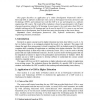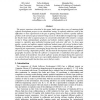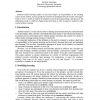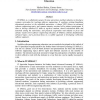CSEE
2009
Springer
14 years 6 months ago
2009
Springer
Advancing Software Engineering (SwE) through Education takes not only commitment and understanding of some key principals, but also requires a tight integration with technologies ...
CSEE
2009
Springer
14 years 6 months ago
2009
Springer
This paper reports on results from a pilot study that used Bloom’s Taxonomy to observe cognition levels during software inspections conducted by undergraduate computer science a...
CSEE
2009
Springer
14 years 6 months ago
2009
Springer
The wicked nature of software architecture calls for educational methodologies that deviate from the traditional active lecturer-passive student relation. In this paper we present...
CSEE
2009
Springer
14 years 6 months ago
2009
Springer
This paper describes an application of a Game Development Framework (GDF) Microsoft XNA in software architecture (SA) course at Norwegian University of Science and Technology (NTN...
CSEE
2009
Springer
14 years 6 months ago
2009
Springer
The project experience described in this paper builds upon three years of running global software development projects in an educational setting. It explicitly addresses some of t...
CSEE
2009
Springer
14 years 6 months ago
2009
Springer
Student-centred learning implies an increased degree of responsibility in the learning context by the student, and an equally increased level of delegation by the teacher. This pa...
CSEE
2009
Springer
14 years 6 months ago
2009
Springer
Since publication of the 2004 version, the Software Engineering Body of Knowledge (SWEBOK) has notably served as a major input to the design of curricula at the undergraduate and ...
CSEE
2009
Springer
14 years 6 months ago
2009
Springer
IT SPIRAL is a collaborative project by nine universities and four industries to develop a common curriculum for teaching software engineering. It combines existing foundation edu...




